Thrust Bearing Design: Performance Analysis and Power Loss Report
VerifiedAdded on 2023/06/14
|5
|1160
|210
Report
AI Summary
This report provides a detailed analysis of a thrust bearing design, focusing on its performance and power loss characteristics. The design requirements include supporting a 500 kN load with a shaft diameter of 500 mm, operating at 3000 rpm using ISO Grade 46 lubricant. The analysis covers the calculation of minimum film thickness, actual mean pressure, and total power loss. The report evaluates the acceptability of the design based on these parameters and discusses methods to minimize power loss, including the use of ceramic bearings and optimizing oil inlet temperature and viscosity. Recommendations for ceramic bearings are provided, highlighting their advantages such as high accuracy, low wear rate, and low noise levels. The report also includes a comparison of different bearing types based on speed, life, and cost, concluding that ceramic bearings are suitable for minimizing power loss. The document includes references to support the analysis and recommendations. Desklib is a platform where students can find similar solved assignments and study resources.
1 out of 5
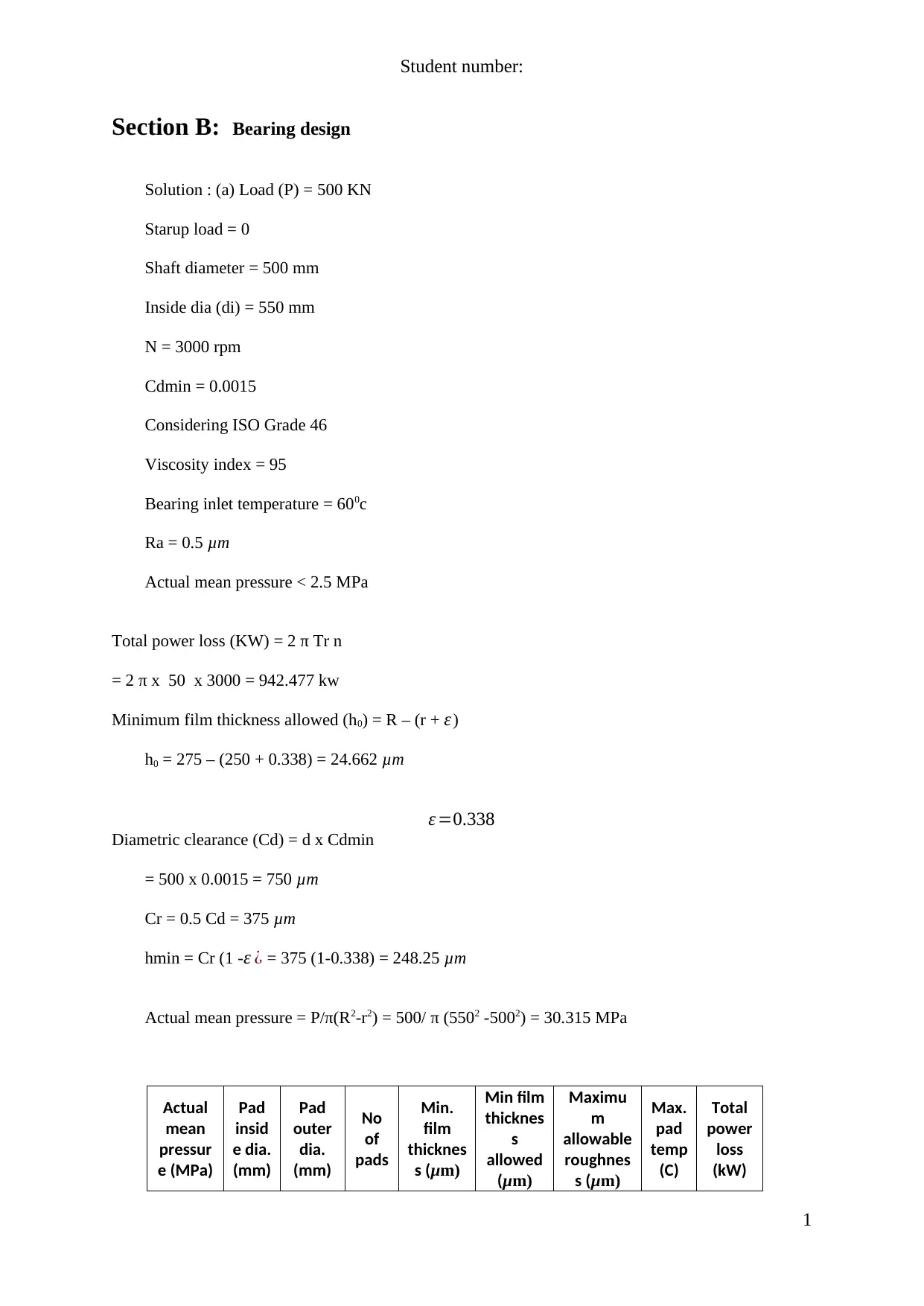
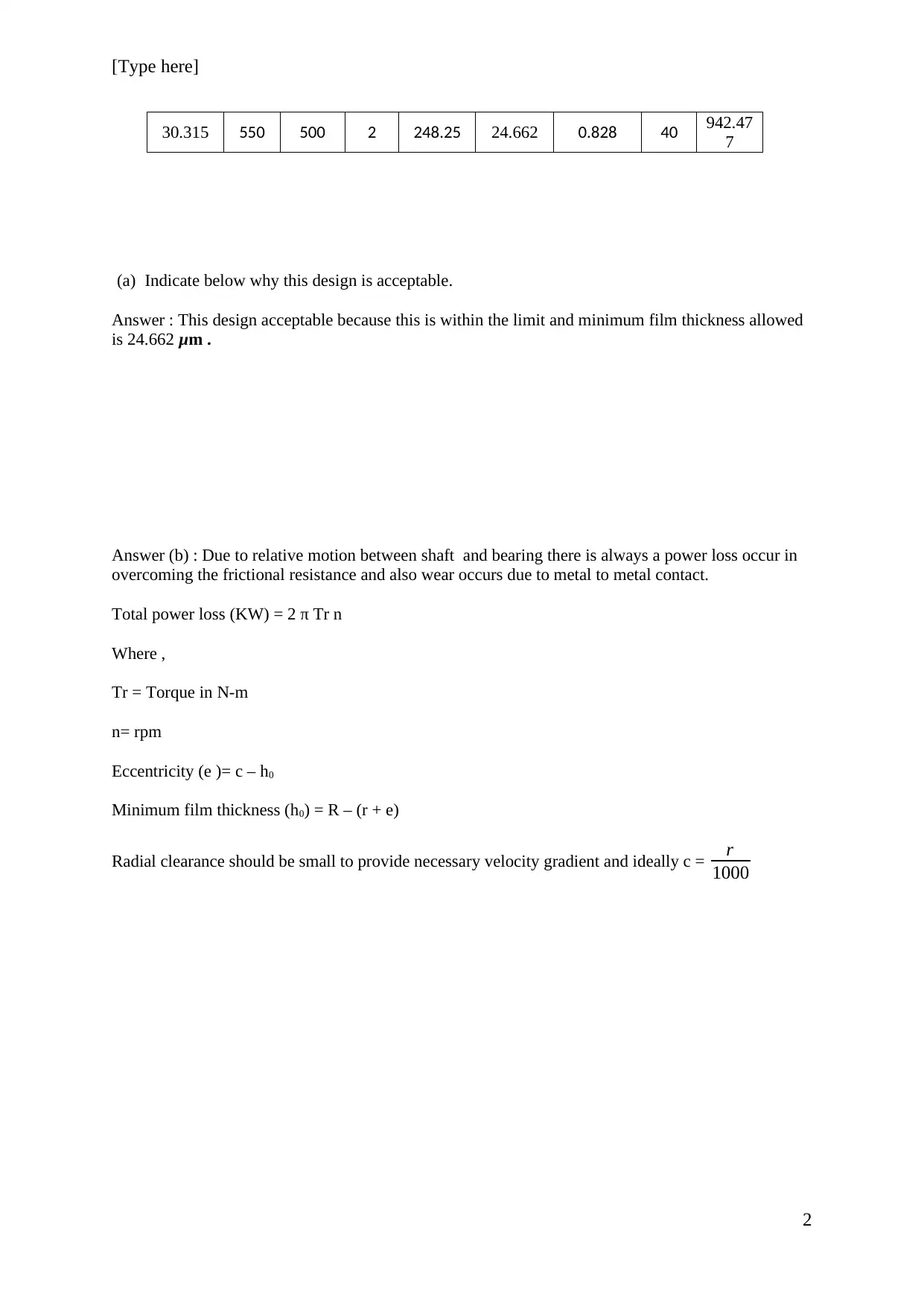
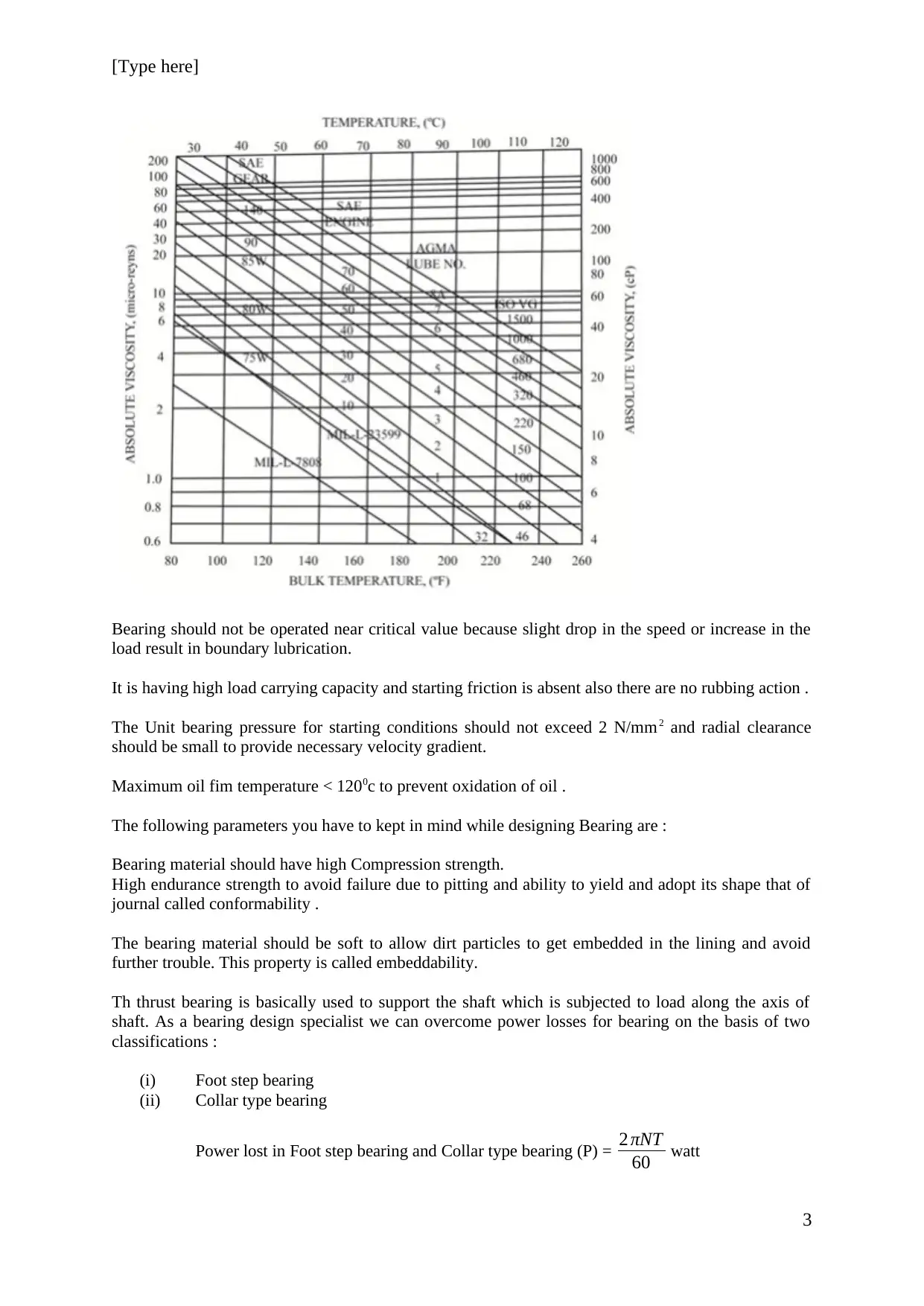

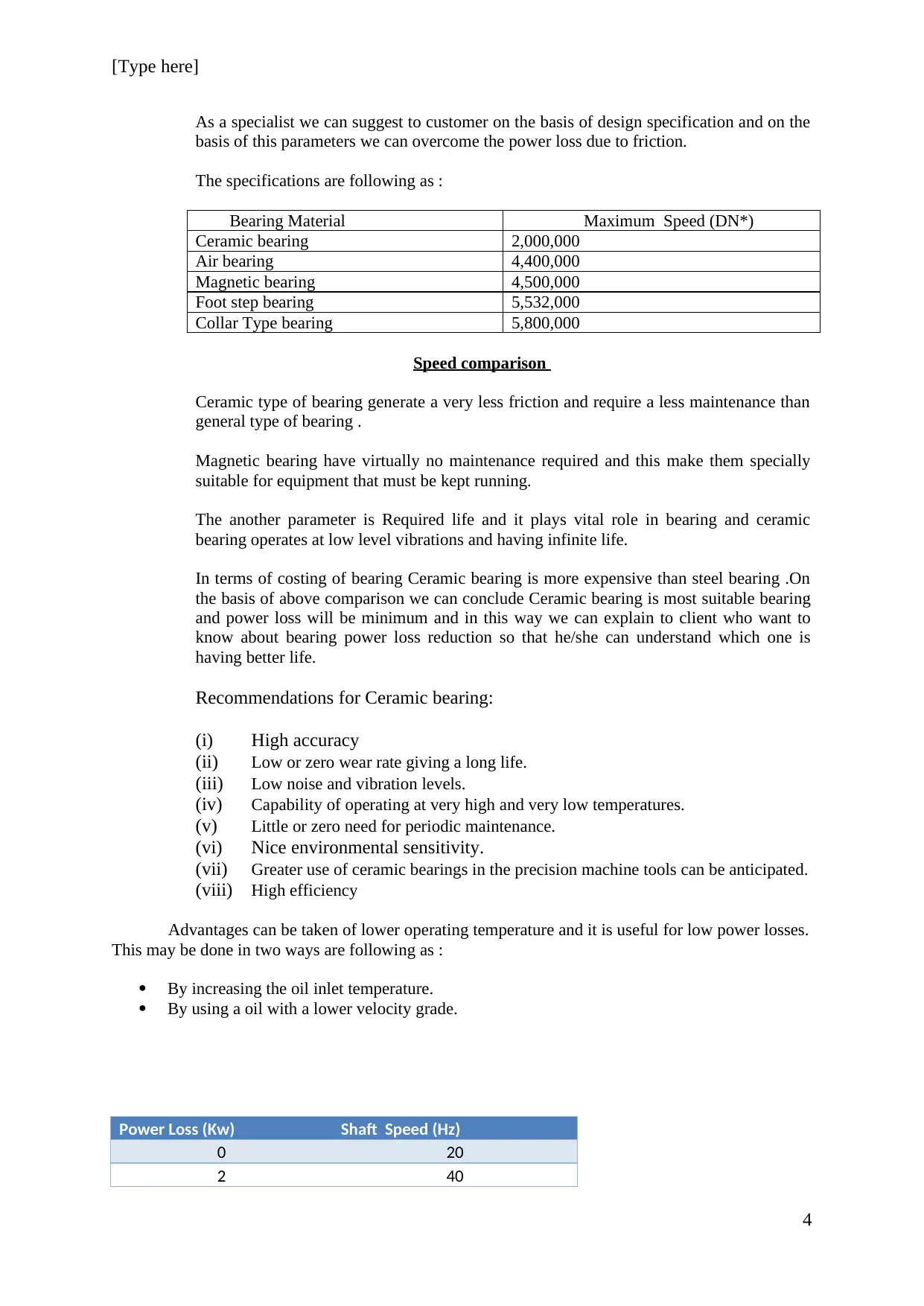
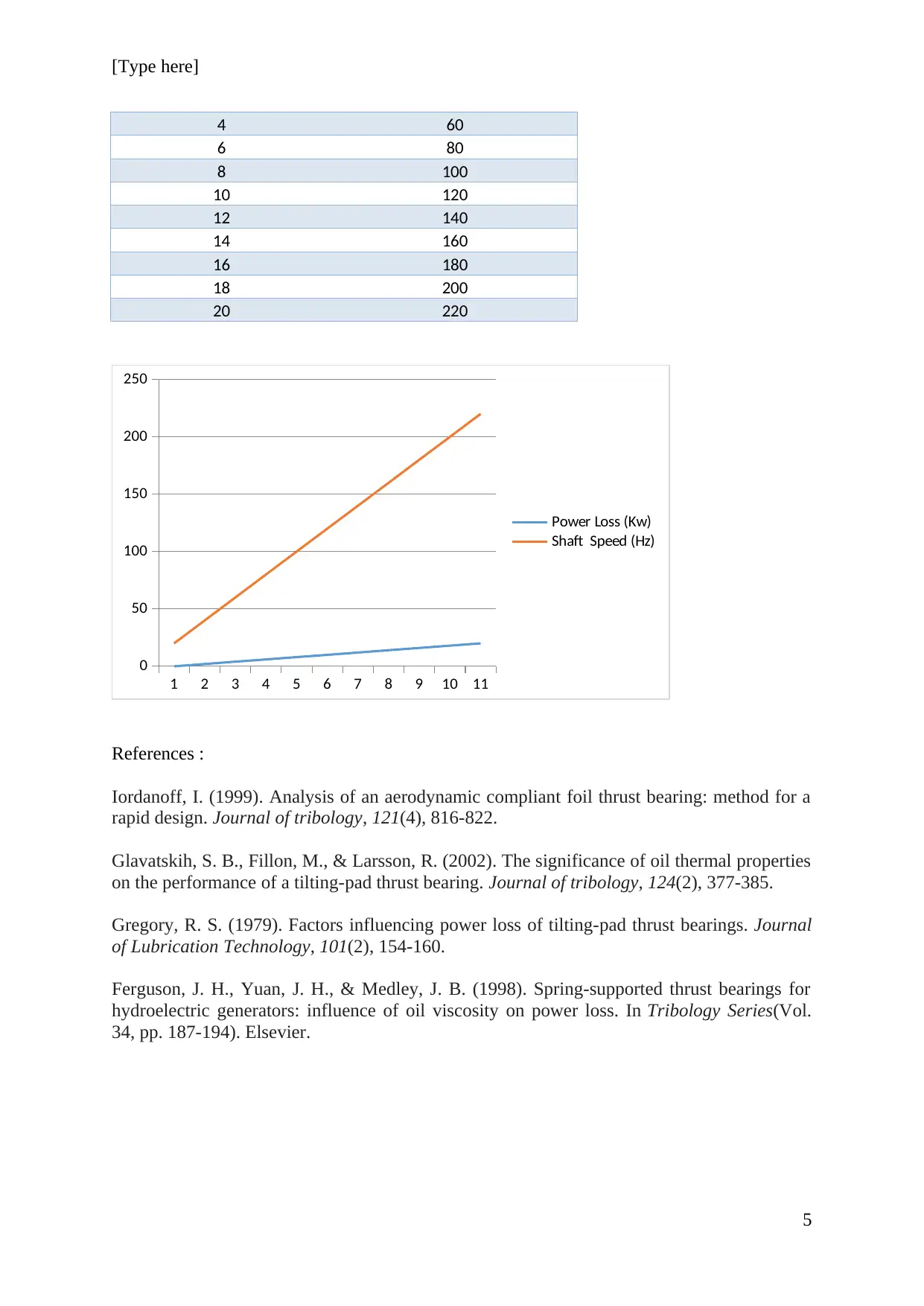
![[object Object]](/_next/static/media/star-bottom.7253800d.svg)